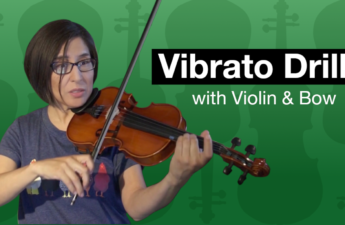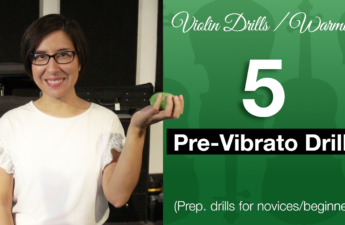This is my method for practicing the G major 2 octave scale and it’s arpeggio on the violin. The G major scale has been by far the most common 2 octave scale used for many beginner songs. To get a little more insight on how to practice G major 2 octave scale, lets review the details….
Pre Requisites:
- Make sure all of your strings are in tune.
- I recommend you learn the A major and D major one octave scale before trying to learn the G major 2 octave scale. You can check out my previous blogs regarding those scales, and once you learn those scales come back to learn the 2 octave G major scale.
- By now you should already be accustomed to playing without a fingerboard guide or stickers. Try to use you ears as much as possible to fine tune your intonation (or use a tuner as well). Of course, if you’re not at that stage yet, feel free to mark your fingerboard with guides. But start getting used to the idea of having a clean fingerboard. Real violinist do not use stickers – they just don’t.
Let’s start off by reviewing which notes to hit on the violin to get a G Major 2 Octave Scale: We will start off by practicing with 3 fingers and open strings.
- Start with open G
- First finger will hit A
- Second finger will hit B (place the second finger a whole step down from the first finger to hit B)
- Third finger will go a half step down to hit C
- Then hit open D
- First finger will hit E
- Again stretch your second a whole step down to hit F#
- Third finger a half step down to hit G
- Now continue by playing the open A string
- First finger will hit B
- Here, you will notice a pattern change: second finger on C natural. This means you will place your second finger closer (a half step down) to the first finger.
- Now you have to stretch your third finger a whole step down to hit D
- Now play open E
- First finger on F
- Your second finger will end the entire scale on G – which, like you did on the A string, your second finger will land closer to the first (a half step down) to hit the last G natural note.
Always start practicing scales by playing slow controlled bow strokes.
First learn to play this scale by using only 3 fingers and single bows. Then step it up by practicing with bow slurs. I start off with playing 2 notes per one bow stroke.
Once your comfortable with the G major 2 octave scale, you want to start to include the 4th finger to play the open string notes. We do this by playing the open D with the 4th finger on the G string (A whole step down from the third finger – on all strings), open A with the 4th finger on the D string and open E with the fourth finger on A.
Now lets go over the arpeggio for the G major scale:
- Play open G,
- 2nd finger on G to hit B
- Open D
- 3rd finger on D to hit G
- Then 1st finger on A to hit B
- 3rd finger on A to hit D
- And last, 2nd finger on E to hit G
My beginner to beginner bonus tip for learning this arpeggio is to be mindful of the relationship between the positions of the fingers as you cross the strings. You can do this by “finger gluing”. For example, in the second half of the arpeggio when you hit B, your next note will be your third finger on the A string which is D. You can keep your first finger down on A (the B note) as you continue to play the last G note which is second finger on E. Continue gluing down your B note as you play back D on A, B and G on D. After that, keep your fingers close to the strings to mark the distances between the current note and the next note. This will give you a better chance to hit the right pitch every time.
The G major scale was the third and first 2 octave scale I learned, and like all scales, it has helped me refine my intonation. Use scales as an exercise and warm up routine to help refine not only your intonation, but also your left hand posture, and bowing.
If you’re interested a reference track for the G major scale, click the following link below to download the MP3 file from my Patreon page. And yes, it does require a 1 dollar donation for all downloads.
Get the G Major, 2 Octave Scale Piano Track
I hope this has been insightful!


